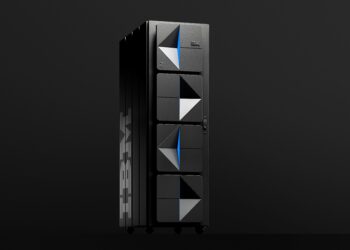What is Lulu’s blueprint for digital transformation?
One of the things we want to do is to transform and be more customer-centric. Our digital strategy is centred around how we can engage with our customers better. We were predominantly a brick-and-mortar retailer, and now the focus is on giving our customers an omnichannel experience. I don’t want to emphasise only e-commerce because that is just one part of the ecosystem we want to build.
We are also looking at how to capitalise on data to drive business growth. We have many customers walking into our stores, we supply merchandise from 22 odd countries, so there is a lot of data being generated across the supply chain, stores, and warehouses. We want to use this data for more meaningful insights and reduce costs.
We have more than 190 stores and our business strategy is to expand in a major way in Saudi Arabia, Egypt, the Far East, and India. To support this growth strategy, we are now working on technology modernisation, which will be underpinned by the transition to the cloud and more scalable and resilient solutions.
Do you see an accelerated shift towards e-commerce in the region?
Unfortunately, in the GCC countries, digital commerce penetration was lower than any other geography. However, because of Covid-19, there has been a sudden spike in digital commerce. And while some of it might be temporary, the projected e-commerce growth that would have otherwise happened in 2025 may be realised as early as 2023.
We want to make sure we ready for this, but we don’t want to be a pure-play e-commerce player because our strength is in physical stores. Our strategy is to merge online and offline journeys and offer a seamless omnichannel experience to the customer.
Why did the group decide to move to IBM Power Systems?
We were one of the early adopters of SAP HANA, our core application, and we have brought in a lot of innovation working alongside SAP. Ever since 2005, we have gone through two rounds of a refresh, and we are almost three-times bigger since the last upgrade in 2014. Running one of the largest SAP implementations in the region is not an easy job, especially in retail, where the customer behaviour is very dynamic. We required much more powerful, flexible, and scalable systems that are ready for the future as part of our technology landscape.
We did a thorough evaluation and reached out to our peers all over the world to understand where technology is moving in terms of core infrastructure. We had two choices – one was to look at the cloud, which we realised is not feasible at the moment for the kind of workloads we have. So it was a conscious decision to host this in our own data centre. The main points of our evaluation criteria were – How resilient and scalable are the systems? Have they been proven in the landscape out there? And how futuristic is the underlying technology?
We wanted to tie up with a vendor with a deep interest in creating ecosystems and platforms because you can’t run one of the largest SAP instances on a mediocre system. It needs to be reliable, and more importantly, modular. After some very descriptive and quantitative assessment, we zeroed in on IBM as our partner.
We migrated from x86 platforms to IBM infrastructure. Right now, we have 16TB of SAP HANA workloads running on it, and we may double the capacity over the next few years based on our expansion plan. As I mentioned earlier, part of our digital transformation journey is to create data points and consolidate all hard data from core ERP, supply chain, and store systems on to this platform and make it accessible to the business. We will also extend it to future-proof, cloud-ready data lakes over the next couple of months.
How long did it take to migrate?
The whole migration took us around three months and was carried out in a tremendous collaborative manner with our partners. You have to keep in mind the fact that we placed the order just before the pandemic broke out, and the conditions were challenging because these are not out-of-box systems but custom-made. We also moved to the latest version of storage, which has a sophisticated virtualisation layer on top, and this helped us consolidate all our storage.
Moving all workloads from old systems to the new one was a bit like changing parts of an aeroplane while it is in motion. We made sure that the core ERP system downtime was kept at a bare minimum with the help of parallel systems, and the transition was smooth without any glitches.
A migration like this requires collaboration between application and infrastructure teams. How did you manage to do that during this pandemic?
That is where digital resilience comes into play. Digital workforce transformation means how you react to different situations, and we proved ourselves in having done that. We were able to work with a diverse set of people spread globally. We take pride in the fact that we have deep application experience in SAP and HANA platforms. A lot of heavy lifting was done by our team here, and I am immensely proud that we could pull this off despite all the challenges.
Have you been to reduce your infrastructure footprint as a result of this shift?
We were able to reduce the server footprint in the data centre, and also consolidate storage requirement onto modern storage infrastructure. The management of SAP workloads and storage is so much easier now, and we can do it with fewer people. However, the most significant advantage is our ability to scale up and down. To give you an example, during the lockdown, we had to import three times more volume to ensure the food security of the country, and our system had to scale up very quickly. We are living in an increasingly volatile world, and our ability to venture into unchartered waters will depend on how quickly we can scale up or scale out systems without any friction, and resiliency towards diverse workloads.
Are you able to do real-time data analytics now?
One of the paradigm shifts we want is to move away from batch processing to real-time analytics to shape the customer experience. Now we can capture and process data in real-time from in-store transactions. The key to success in retail is to be data-centric. We will keep improving our data management and churn hard data to create more insights for business teams and create better customer satisfaction.
We see increased cloud usage due to Covid-19. Are you looking at a cloud consumption model, or will you self-manage?
Cloud is going to be an important part of our journey. However, it has to be a choice that needs to be made on its merit, and I say this for multiple reasons. One is that the cloud is not ready for mission-critical workloads. We did a thorough cost-benefit analysis working with all the major cloud players in the region and realised that the cloud is not the right choice for us. If you don’t have cloud-native apps, then you don’t get the benefit at all. You will fail if you lift and shift monolithic applications to cloud environments, and it can prove to be very costly. This is why we are going to follow a hybrid model – we are going to run our monolithic apps on-premise, and all new-gen applications, which are cloud-and mobile-first, will be hosted in the cloud.
Has this pandemic made you rethink some of your tech investment plans and priorities?
Not much. One thing that we see during this pandemic is that the pace of digital investments has accelerated. Cloud, automation and customer engagement technologies based on AI and ML were there before COVID too. But it is no longer a choice for organisations now; it has become a must-have to grow business. In our case, because the customer transition towards digital commerce is happening at a rapid clip now, we are reacting to the trend by adding more fulfilment centres, delivery fleet, etc. Now, we have a world-class platform that allows us to focus more on the e-commerce ecosystem.










Discussion about this post